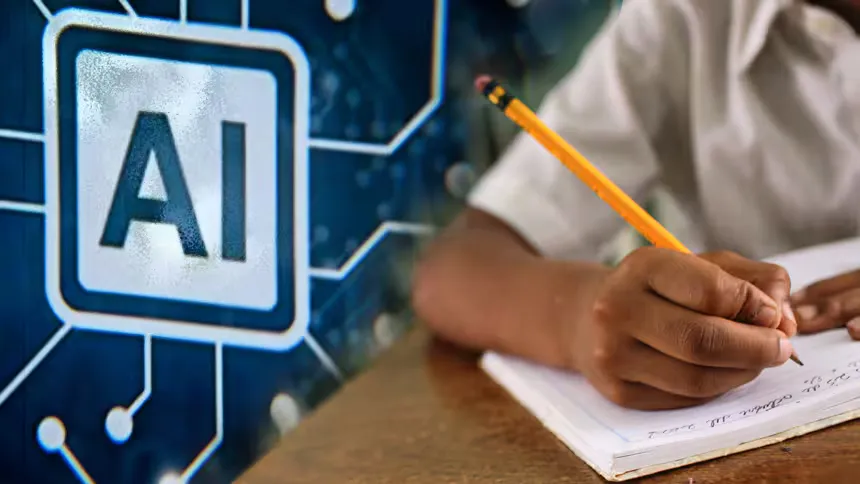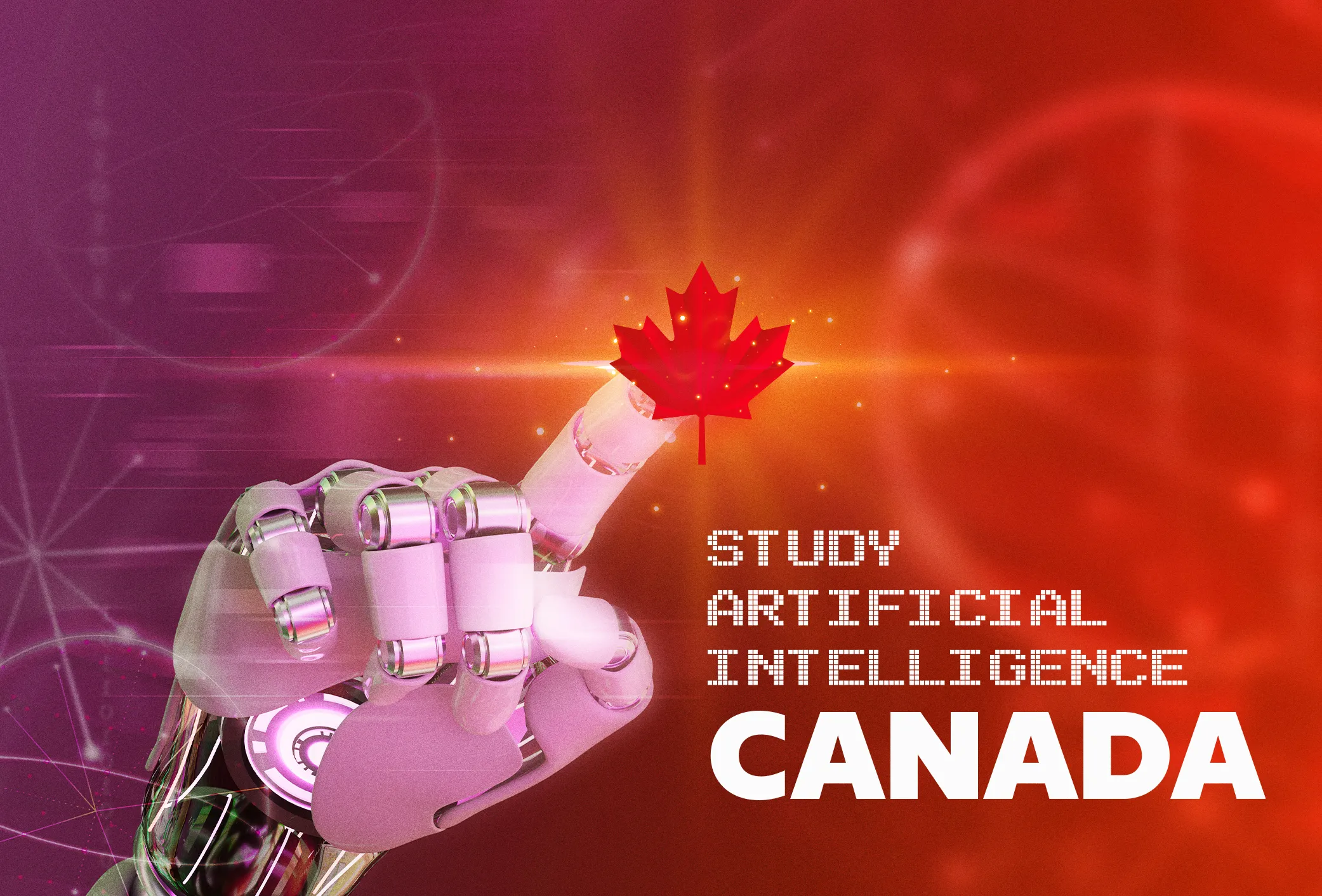How Artificial Intelligence Is Transforming Canadian Classrooms in 2025

Artificial intelligence in Canadian education is no longer a futuristic dream—it’s a dynamic force reshaping how students learn and teachers teach.
In 2025, classrooms across Canada, from rural Nova Scotia to bustling Toronto, are embracing AI to create tailored learning experiences, streamline administrative tasks, and prepare students for a tech-driven workforce.
This transformation, however, is not without its complexities.
As schools and universities integrate AI, they navigate ethical dilemmas, equity concerns, and the need to preserve human connection in education.
This article dives into the innovative ways AI is revolutionizing Canadian classrooms, the challenges it brings, and the promise it holds for the future.
The integration of AI not only enhances the learning experience but also raises important questions about the role of technology in shaping future generations.
Personalizing Learning with AI-Powered Tools
Imagine a classroom where every student’s unique learning style is not just acknowledged but actively supported.
AI is making this a reality in Canadian schools by delivering personalized education at scale.
Platforms like SmartLearn, a fictional AI-driven tool developed in Vancouver, analyze student performance in real time, adapting lessons to match individual strengths and weaknesses.
For example, a Grade 7 student in Calgary struggling with fractions might receive interactive exercises tailored to their pace, while their classmate, excelling in the same topic, is challenged with advanced problem sets.
This adaptability mirrors a skilled tutor, guiding each learner along their own path.
A 2024 study by the University of Toronto found that 68% of Canadian secondary schools using AI-based platforms reported improved student engagement and academic outcomes.
This statistic underscores the potential of AI to bridge gaps in traditional education, particularly for students who might otherwise fall behind.
By analyzing data from quizzes, assignments, and even classroom participation, AI tools provide teachers with insights to fine-tune their instruction, ensuring no student is left behind.
Yet, the question lingers: can technology truly replicate the nuanced understanding of a human educator?
As AI continues to evolve, its role in personalizing education will likely expand, creating even more tailored learning experiences for diverse student populations.
Streamlining Administrative Burdens for Educators
Teachers are the heart of education, but administrative tasks often consume their time and energy.
AI is stepping in to lighten this load, allowing educators to focus on what they do best—teaching.
In Ontario, the fictional AI platform TeachFlow automates grading for multiple-choice tests and even provides preliminary feedback on written assignments.
This tool uses natural language processing to evaluate essay structure and coherence, freeing teachers to offer deeper, qualitative insights.
For instance, a high school teacher in Ottawa can now spend less time marking and more time mentoring a student struggling with public speaking.
Beyond grading, AI assists with scheduling, attendance tracking, and even parent communication.
In British Columbia, some schools use AI chatbots to send personalized updates to parents, summarizing their child’s progress and suggesting ways to support learning at home.
This efficiency is a game-changer, especially in understaffed schools.
However, the reliance on AI raises concerns about depersonalizing education.
If machines handle routine tasks, will teachers remain the empathetic guides students need?
As educators adapt to these new tools, ongoing training and support will be essential to ensure they can effectively leverage AI without losing the personal touch that defines quality education.
Preparing Students for an AI-Driven Workforce
The future of work is undeniably tied to technology, and Canadian educators are using AI to equip students with relevant skills.
In universities like McGill and UBC, AI courses are now part of computer science and humanities curricula, reflecting the interdisciplinary nature of the field.
These programs teach students not only how to code AI systems but also how to navigate their ethical implications.
For example, a sociology student at McGill might analyze how AI algorithms impact social equity, while a computer science major develops a tool to detect bias in hiring software.
High schools are also stepping up.
In Manitoba, a new dual-enrollment program allows Grade 11 and 12 students to take AI-focused courses at local colleges, earning credits toward both their diploma and a postsecondary credential.
This initiative, inspired by the U.S. Presidential AI Challenge, fosters early expertise in a field that’s shaping industries from healthcare to finance.
By embedding artificial intelligence in Canadian education, schools are preparing students to thrive in a world where adaptability and tech fluency are paramount.
As these educational programs evolve, they will play a crucial role in ensuring that students are not only consumers of technology but also innovators who can shape its future.
+ Bridging the Skills Gap: How Canadian Colleges Are Adapting to the Future Job Market in 2025
| Tool | Function | Region | Impact |
|---|---|---|---|
| SmartLearn | Personalized learning plans | Nationwide | Improved student engagement by 68% |
| TeachFlow | Automated grading and feedback | Ontario, BC | Reduced teacher grading time by 30% |
| AI Chatbots | Parent communication and progress reports | British Columbia | Increased parent engagement by 25% |
| AI Coding Labs | Hands-on AI programming for students | Manitoba, Quebec | 15% rise in STEM enrollment in pilot schools |

Ethical Challenges in the AI Classroom
As AI weaves itself into education, ethical questions loom large.
One pressing concern is data privacy.
AI tools rely on vast amounts of student data—test scores, behavioral patterns, even keystroke analytics—to function effectively.
In 2025, Canadian schools must comply with strict privacy laws like PIPEDA, but gaps remain.
For instance, how do we ensure that third-party AI providers protect sensitive student information?
A breach could expose personal details, eroding trust in these systems.
Another challenge is equity.
While AI promises personalized learning, access to these tools is uneven.
Urban schools in Toronto and Vancouver often have the funding and infrastructure to adopt advanced AI platforms, but rural and Indigenous communities may lack reliable internet or devices.
This digital divide risks widening existing educational disparities.
The UNESCO Global Forum on AI Ethics, held in Bangkok in June 2025, emphasized the need for inclusive AI frameworks to ensure no student is left behind.
Canadian policymakers are now tasked with balancing innovation with fairness, a tightrope walk that demands careful planning.
Addressing these ethical challenges will be crucial in ensuring that AI serves as a tool for equity rather than a barrier.
Fostering AI Literacy and Critical Thinking
AI isn’t just a tool—it’s a subject in its own right.
Canadian educators are prioritizing AI literacy to empower students to understand and question the technology shaping their world.
In Halifax, schools have integrated AI ethics into social studies curricula, teaching students to evaluate the risks and benefits of algorithms.
For example, a Grade 10 class might debate whether AI should be used to grade essays, weighing issues like fairness and bias.
This approach ensures students aren’t just consumers of AI but critical thinkers who can shape its future.
Universities are also leading the charge.
The University of Saskatchewan, for instance, has launched an AI Literacy Certificate, a program that combines technical skills with ethical analysis.
Students learn to code basic AI models while exploring real-world case studies, such as AI’s role in simplifying legal rulings for public access.
This dual expertise—technical and ethical—is crucial in a world where AI influences everything from job applications to criminal justice.
By fostering AI literacy, educators are equipping students with the tools they need to navigate an increasingly complex technological landscape.
| Issue | Description | Proposed Solution |
|---|---|---|
| Data Privacy | Risk of student data breaches | Stricter vendor audits, transparent policies |
| Digital Divide | Unequal access to AI tools in rural areas | Federal funding for tech infrastructure |
| Algorithmic Bias | AI systems may reinforce existing inequalities | Regular bias audits, diverse training data |
| Over-Reliance on AI | Reduced human interaction in learning | Hybrid models prioritizing teacher input |

The Human Element: AI as a Partner, Not a Replacement
Think of AI in education as a compass, not a captain.
It guides teachers and students toward better outcomes but shouldn’t steer the ship alone.
The human element—empathy, creativity, and critical judgment—remains irreplaceable.
In a Montreal elementary school, teachers use AI to identify students who need extra support, but it’s the teacher’s encouragement that helps a shy student gain confidence.
This synergy between technology and humanity is where AI’s true potential lies.
Events like the 2025 International Day of Education in Paris, themed “AI and Education: Preserving Human Agency,” highlighted this balance.
Speakers emphasized that AI should enhance, not replace, the teacher-student relationship.
Canadian educators are taking this to heart, using AI to complement their expertise rather than supplant it.
For instance, in Alberta, teachers combine AI-generated lesson plans with hands-on activities, ensuring students engage both digitally and in person.
Recognizing the importance of the human touch in education will be essential as AI continues to evolve and integrate into classrooms.
++ New Student Loan Rules: What Graduates Need to Know Before Summer
Overcoming Implementation Challenges
Integrating AI into Canadian classrooms isn’t seamless.
Beyond ethical concerns, logistical hurdles abound.
Teacher training is a significant bottleneck—many educators lack the skills to use AI tools effectively.
A 2025 report by The 74 noted that not one Canadian superintendent surveyed viewed higher education as a reliable resource for AI-related professional development.
Schools are turning to private providers and online courses, but these solutions are often costly and inconsistent.
Funding is another issue.
While provinces like Ontario and Quebec have invested in AI pilot programs, smaller jurisdictions struggle to keep up.
Rural schools, in particular, face challenges like outdated hardware and limited technical support.
To address this, the federal government could expand grants for tech infrastructure, ensuring equitable access to artificial intelligence in Canadian education.
By tackling these implementation challenges, Canada can create a more effective and inclusive educational landscape.
Looking Ahead: The Future of AI in Canadian Education
The journey of AI in Canadian classrooms is just beginning.
By 2030, experts predict that AI will be as commonplace in schools as textbooks are today, seamlessly integrated into every subject.
But the path forward requires bold action.
Policymakers must prioritize teacher training, ethical guidelines, and equitable access to ensure AI serves all students, not just a privileged few.
Universities, meanwhile, have a critical role in shaping AI policies and fostering interdisciplinary research, as outlined in UNESCO’s 2024 report on higher education’s role in national AI strategies.
The promise of artificial intelligence in Canadian education lies in its ability to amplify human potential.
It’s not about replacing teachers or automating learning but about creating a system where every student can thrive.
As Canada navigates this transformation, the focus must remain on balancing innovation with integrity, ensuring that AI serves as a tool for empowerment, not a barrier to equity.
This balanced approach will be key to successfully integrating AI into the educational framework, benefiting all students across the country.
Conclusion
Artificial intelligence in Canadian education is redefining what’s possible in classrooms, from personalized learning to streamlined teaching.
Yet, its success hinges on addressing ethical, logistical, and equity challenges.
By fostering AI literacy, investing in teacher training, and prioritizing human connection, Canada can lead the way in creating an education system that’s both innovative and inclusive.
The future is bright, but it’s up to educators, policymakers, and students to shape it wisely.
As we move forward, the collaboration between humans and AI will be crucial in building a more equitable and effective educational landscape.
